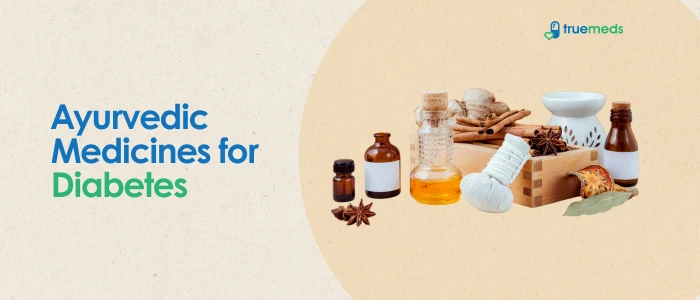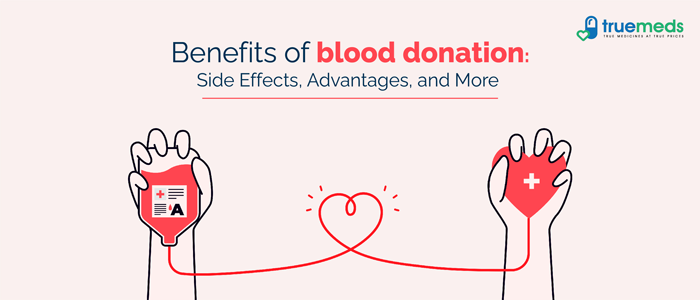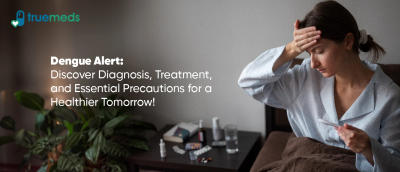Symptoms of Fungal Infections
Last updated on : 26 Sep, 2024
Read time : 9 min
Introduction
Fungi are practically everywhere, from the soil to plants and the human body. Although many fungi do not pose a threat, others can be infectious and may occasionally lead to serious health issues. These infections normally affect skin, nails, and hair, depending on the kind of fungus and the person’s health condition; they also cause damage to the internal organs of a person in some instances. Such infections will therefore occur more often in people with weakened immune systems but might also be seen in healthy individuals.
Infections due to fungi can broadly be divided into superficial and systemic infections. While the former causes infection only on the outer layers of skin, scalp hair, and nails, the latter may involve any organ and system. Therefore, it is very important that fungal infections symptoms are recognised to seek timely medical intervention for avoidance of complications. Herein, we will discuss what a fungal infection is, its symptoms, and why it should be detected and treated at the earliest.
What are Fungal Infections?
Fungal infections are diseases caused in varying types by yeasts, molds, and dermatophytes. They can occur when fungi have been allowed to invade and begin to grow on or inside the body. The various kinds of fungal infections are categorized according to the portion of the body they infect, including:
1. Superficial Fungal Infections
These affect the skin, scalp, and nails. Though generally not life-threatening, superficial fungal infections are able to cause discomfort and a cosmetic concern for many.
2. Subcutaneous Fungal Infections
The fungi, after gaining entry into the body through penetration in the skin from cuts or wounds, infect the deeper layers of skin and cause subcutaneous fungal infections. Such infections may lead to chronic conditions that can be pretty hard to treat.
3. Systemic Fungal Infections
The most dangerous ones are systemic fungal infections, which are caused by the spread of fungi within internal organs and systems. As was noted above, this kind of infection more commonly happens to people with weakened immune systems caused by diseases such as HIV/AIDS or cancer, or after a course of immunosuppressive therapy.
Symptoms of Fungal Infections
The fungal infection symptoms can differ significantly based on the type of fungus, site, and general health. Here we would discuss some of the common signs and symptoms of the different types of fungal infections.
1. Skin Fungal Infections
Athlete’s Foot (Tinea Pedis)
Athlete’s foot is a very prevalent fungal infection, mostly affecting the interdigital areas of the feet. It has the following features:
- Itching, stinging and burning sensation between the toes
- Cracked, peeling, and scaly skin
- Redness and blisters
- Foul odor
Ringworm (Tinea Corporis)
Ringworm is a fungal infection that appears in many parts of the human body. It is generally present on the scalp, groin, feet, and on the nails. Some symptoms are described as follows
- Red, circular, and itchy rash
- Scaly and inflamed skin
- Raised edges with a clearer center
- Blister-like lesions
Jock Itch (Tinea Cruris)
Jock itch is a fungal infection that usually affects the groin area of the body. It mostly occurs in men, particularly athletes. The symptoms are as follows:
- Red, itchy rash in the groin, inner thighs, and buttocks
- Flaky or scaly skin
- Raised edges with a clearer center
- Burning sensation
2. Nail Fungal Infections (Onychomycosis)
Fungal nail infections can be in the toenails and fingernails. They are always more prevalent in toenails because shoes provide a warm, humid environment. Symptoms include:
- Thickened and discolored nails
- Brittle, crumbly, or ragged nails
- Distorted nail shape
- Foul odor
3. Scalp Fungal Infections (Tinea Capitis)
Scalp fungal infections appear more in children; however, they also occur in adults. The symptoms are as follows:
- Scaly and itchy scalp
- Hair loss in patches
- Redness and inflammation
- Black dots where hair has broken off at the scalp
4. Oral and Genital Fungal Infections
Oral Thrush
Oral thrush is a yeast infection caused by Candida, affecting the mouth and throat. The manifestations of the same include:
- White patches on the tongue, inner cheeks, and throat
- Redness and soreness
- Difficulty swallowing
- Cracking at corners of the mouth
Genital Yeast Infection
Genital yeast infections are also caused by Candida yeast and can affect both men and women. Symptoms include:
- Itching and burning sensation in the genital area
- Thick, white discharge (in women)
- Redness and swelling
- Painful urination or sexual intercourse
5. Respiratory Fungal Infections
Aspergillosis
Aspergillosis is an infection by the Aspergillus mold, resulting in primarily lung infection, but at times may disseminate to the other parts of the body. Symptoms include:
- Cough with sputum, sometimes bloody
- Shortness of breath
- Chest pain
- Fever
Histoplasmosis
Histoplasmosis is caused due to inhaling spores of the fungus Histoplasma. The fungus is present in the infected droppings of birds and bats. It majorly causes infections to the lungs. Symptoms include:
- Fever and chills
- Cough
- Chest pain
- Fatigue
6. Systemic Fungal Infections
Candidiasis
Candiaisis is caused by yeast of the genus Candida and often leads to systemic infection, thus being able to invade all major organs and systems. Again, symptoms differ depending on the involved area:
- Fever and chills
- Low blood pressure
- Sepsis (in severe cases)
- Organ failure (in extreme cases)
Cryptococcosis
Cryptococcosis is caused by the fungus Cryptococcus neoformans. It frequently affects the lungs and central nervous system. Symptoms include:
- Fever and headache
- Stiff neck
- Nausea and vomiting
- Confusion and disorientation
Factors that Trigger Fungal Infections
Fungi spread from a number of sources. These are:
- Environment: Warm, damp environments house numerous fungi.
- Hygiene: Bad hygiene offers good chances for fungal infections to attack an individual.
- Immunity: When one’s immunity is low, they become more prone to infections.
- Personal Habits: Sharing personal items like towels, shoes, and razors promotes the sharing of fungi.
- Medications: Antibiotics or corticosteroids will change flora and encourage overgrowth of fungi.
Management of Fungus Infections
The treatment method applied varies with the type, severity, and site of infection. The most common ones are:
1. Topical Antifungals
These antifungal drugs are applied directly on the infected area. These majorly include skin and nail infections. Some examples are:
- Clotrimazole
- Miconazole
- Terbinafine
- Ketoconazole
2. Oral Antifungals
Oral antifungals are applied in case of severe or disseminated infections. These are mainly followed by infection in the nail, systemic infections, and respiratory infections. Examples include:
- Fluconazole
- Itraconazole
- Terbinafine
- Voriconazole
3. Intravenous Antifungals
Intravenous antifungal medications are used to treat some serious, invasive infections. These are only administered in a hospital setting. Examples include:
- Amphotericin B
- Caspofungin
- Micafungin
4. Lifestyle and Home Remedies
Besides medical treatment, some lifestyle modifications and home remedies can also help control fungal infections:
- Keep the affected area clean and dry, and do wear loose clothing and well-ventilating shoes.
- Avoid sharing personal things, apply antifungal powder or spray, and maintain good hygiene.
Conclusion
This, therefore, is a general health condition that often occurs in the body. Diagnosis at its early stage with proper treatment is very essential for effective management and recovery from the problem. When you know the various kinds of fungal infections, their symptoms, and ways to prevent them, you can effectively take care of yourself for better health.
In the case of a fungal infection, a professional must be consulted for diagnosing the disease and a proper treatment plan. Most fungal infections can be effectively treated and prevented if proper attention and care are provided to the individual to live a healthy life free from infections.
Get our easy-to-use Truemeds app for affordable medicines. Just upload your prescription to access both brand-name and substitute drugs. Save money on your purchases and enjoy the added convenience of free home delivery on eligible orders across India*.
Disclaimer
The information in this article has been checked for accuracy, but it’s best to talk to a doctor before trying any medicines, supplements, or information mentioned here.
Frequently Asked Questions (FAQs)
If you have an itchy, red rash with a scaly, ring-like appearance that is getting bigger from the center outward, you may have a fungus. Fungal infections usually make skin dry, flaky, sometimes even cracked or blistered. To diagnose a fungal infection, however, a scraping or culture of the skin may be required.
Serious fungal infections can present with symptoms such as persistent fever, chills, and significant fatigue. They may also include severe respiratory symptoms like coughing, shortness of breath, and chest pain. In systemic infections, symptoms can extend to confusion, headache, and organ failure, particularly in individuals with weakened immune systems.
Fungal infections can be effectively treated with antifungal medications. The type of antifungal drug used depends on the specific fungus and the location of the infection. Common antifungal treatments include topical medications like clotrimazole and oral medications like fluconazole. In severe cases, intravenous antifungals may be required.
If a skin fungus is left untreated, it can lead to worsening symptoms, such as increased spreading of the infection, severe itching, and skin damage. Over time, untreated fungal infections may also result in secondary bacterial infections and chronic discomfort. Persistent infections can affect quality of life and may require more intensive treatment if not managed early.
The strongest treatment for fungal infections varies based on the infection’s severity and location. For systemic or severe fungal infections, intravenous antifungal medications like amphotericin B or voriconazole are often used. For localized but persistent infections, oral antifungals such as itraconazole or fluconazole are highly effective. For skin infections, potent topical treatments like terbinafine can be used.
References
- Reddy, G. K. K., Padmavathi, A. R., & Nancharaiah, Y. (2022). Fungal infections: Pathogenesis, antifungals and alternate treatment approaches. Current Research in Microbial Sciences, 3, 100137. https://doi.org/10.1016/j.crmicr.2022.100137
- Kauffman, C. A. (2009). Fungal Infections. In Humana Press eBooks (pp. 347–366). https://doi.org/10.1007/978-1-60327-534-7_22
- Kobayashi, G. S. (1996). Disease Mechanisms of Fungi. Medical Microbiology – NCBI Bookshelf. https://www.ncbi.nlm.nih.gov/books/NBK8103/
Disclaimer
Our healthcare experts have carefully reviewed and compiled the information presented here to ensure accuracy and trustworthiness. It is important to note that this information serves as a general overview of the topic and is for informational purposes only. It is not intended to diagnose, prevent, or cure any health problem. This page does not establish a doctor-patient relationship, nor does it replace the advice or consultation of a registered medical practitioner. We recommend seeking guidance from your registered medical practitioner for any questions or concerns regarding your medical condition.
Popular Articles
Recommended Articles
Recent Articles
Top-Selling Medicines:
...View more
Top-Selling OTC:
...View more
Subscribe
Claim your complimentary health and fitness tips subscription and stay updated on our newest promotions.
Download Truemeds
Manage your health with ease Download Truemeds today!Get easy access to medicine refills, health information, and more. With our app, you'll never have to wait in line again. Download now and start taking control of your health.

Contact Us
Our customer representative team is available 7 days a week from 9 am - 9 pm.
v3.3.6
Our Payment Partners



























































